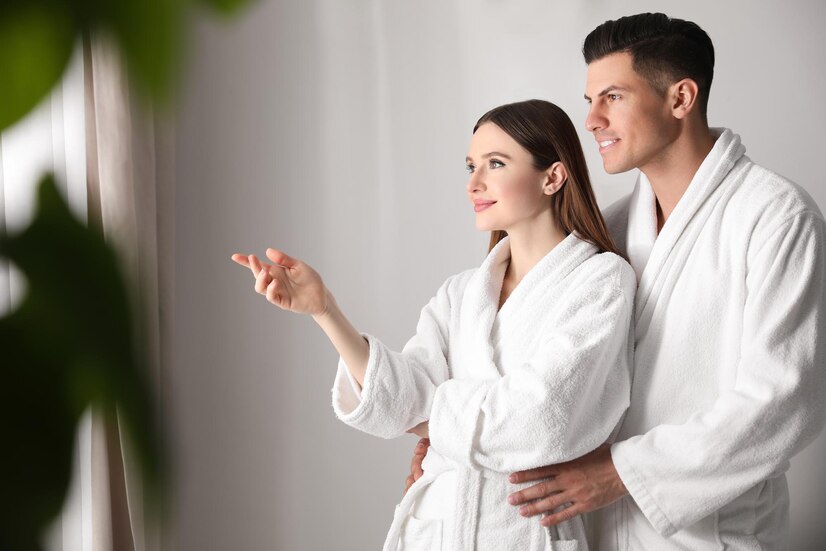Modern life often leaves us disconnected—from ourselves, our partners, and even our sense of well-being. Enter Mutual Touch Massage, a relaxing and intimate practice designed not just for muscle tension relief but also to deepen emotional bonds between couples. Whether you’re new to massage or already a fan of self-care rituals, this guide will arm you with everything you need to give and receive meaningful massages at home.
Read on to learn the benefits of mutual touch massage, how to do it, the tools you’ll need, and the science behind why touch is so powerful.
What Is Mutual Touch Massage (And Why Should You Try It)?
Mutual touch massage is a form of massage where partners take turns giving and receiving massages, creating a balanced and shared experience of relaxation, intimacy, and connection. Unlike professional massages, this practice isn’t about perfecting technique—it’s about mindfulness, communication, and using touch to nurture your relationship.
Benefits of Mutual Touch Massage
- Physical Wellness: Eases muscle pain, improves circulation, and promotes faster recovery after workouts.
- Mental Relaxation: Reduces stress hormones like cortisol and activates your body’s relaxation response via the parasympathetic nervous system.
- Strengthening Emotional Bonds: Physical touch triggers the release of oxytocin, often called the “love hormone,” which fosters feelings of trust and connection.
- Quality Time: For busy couples, this is a grounding way to hit pause, tune into each other, and nurture the relationship.
Mutual touch massage is more than a feel-good activity. It’s a holistic wellness practice you can easily learn and enjoy in the comfort of your own home.
Step-by-Step Guide to Mutual Touch Massage
A good massage doesn’t require expert skills—it just takes intention, focus, and communication. Here’s how you and your partner can get started.
Step 1. Setting the Scene
Transform your space into a relaxing sanctuary:
- Dim the lights or light a few candles.
- Play calming background music or choose nature sounds if you prefer.
- Spread out a soft blanket or invest in a massage table for extra comfort.
Step 2. Open Communication and Establish Consent
Before starting, discuss what areas of the body each person is comfortable having massaged. Be clear about pressure preferences, as well. This not only ensures comfort but fosters trust.
Use phrases like:
- “Would you prefer light or medium pressure?”
- “Does this feel okay, or should I adjust?”
Step 3. Choose Massage Oils to Elevate the Experience
Massage oils reduce friction and leave skin smooth and nourished. Use:
- Sweet Almond Oil (a versatile, non-greasy favorite)
- Coconut Oil (deeply hydrating and effective for dry skin)
- Essential Oil Blends (lavender for relaxation, peppermint for cooling relief)
Step 4. Focus on Massage Techniques
You don’t need formal training; just use these simple techniques:
- Effleurage (Gliding Strokes): Use your palms to glide over large muscle groups in long, steady motions.
- Kneading: Use your fingertips or thumbs to apply gentle pressure on knots or tense areas.
- Circular Movements: With your fingers or palms, make small circles on tight areas like the shoulders or lower back.
Switch roles roughly every 15–20 minutes to ensure the experience feels equal and mutual.
Step 5. End with Gratitude
Conclude the session by expressing appreciation for your partner. A simple “Thank you for taking care of me” can deepen the emotional benefits of your mutual touch massage.
Pro Tip: Don’t rush back to your day. Lie down together for a few minutes afterward to fully absorb the relaxation.
Tools and Accessories for an Enhanced Experience
While you can begin with just your hands, several tools can amplify the benefits of mutual touch massage:
- Massage Oils: Choose from the above options or explore blends designed specifically for relaxation or muscle relief.
- Essential Oils & Diffusers: Add a calming scent to your environment with oils like eucalyptus or bergamot.
- Massage Tools: Use foam rollers, handheld massagers, or even textured massage balls for hard-to-reach tension spots.
- Heated Blanket or Pads: Warmth promotes relaxation and soothes muscle tension even further.
Investing in a few high-quality tools can take your massage routine from simple to spa-like.

The Science Behind Why Touch Transforms Us
Ever wonder why a simple touch feels so soothing? Here’s what happens inside your body when you give or receive a massage:
- Stress Reduction: Gentle pressure signals your brain to lower cortisol levels while producing serotonin, which stabilizes mood and promotes calmness.
- Nervous System Activation: Massage encourages your parasympathetic nervous system to take over, slowing your heart rate and aiding digestion.
- Improved Blood Flow: Massage stimulates your circulatory system, delivering fresh oxygen to your muscles and organs.
- Oxytocin Release: Known as the “cuddle hormone,” oxytocin strengthens emotional connections. This is key for couples looking to build intimacy.
With such a strong mind-body connection, it’s no surprise that mutual touch massage ends up being a wellness win for both partners.
Real-Life Stories From Couples Who Swear By Mutual Touch Massage
“It’s Our Reset Button”
“For us, mutual touch massage is like hitting a reset. Between work and parenting, we rarely have time to connect on a deeper level, but this simple ritual has brought us closer.”
— Jenna, 34, Orlando
“It’s Perfect After a Workout”
“Both of us are fitness junkies, so we started this as a way to relax after gym sessions. Now it’s become a regular bonding activity and something we genuinely look forward to.”
— Alex, 29, Seattle
“We’re All About the Aromatherapy”
“We love experimenting with different essential oils—adding scents like lavender has completely upgraded our relaxation game.”
— Trisha & Miguel, Austin
These stories illustrate how easily mutual touch massage can become part of daily life, tailored to each couple’s unique situation.
FAQs About Mutual Touch Massage
Have more questions before trying your own massage session? We’ve got answers.
Is prior training required for mutual touch massage?
No professional training is necessary. Following simple techniques and prioritizing communication is more than enough.
Can mutual touch massage replace professional massages?
It’s not meant to replace clinical treatments. Instead, see it as a complementary practice for connection and relaxation.
How frequently should we do this?
There’s no rule—weekly, monthly, or whenever you feel stressed. It’s all about what works for both partners.
What if I’m worried about “doing it wrong”?
There’s no wrong way to show care and affection. Focus on the experience, not perfection.
Massage Your Way to Connection
Mutual touch massage is more than stress relief—it’s a way to deepen bonds, improve wellness, and spend meaningful moments with your partner. By creating a safe, intentional space and using simple steps, you can turn your home into a sanctuary of relaxation and intimacy.
Don’t just take our word for it—try it. And if you’re ready to take the first step toward incorporating this practice into your routine, tag your favorite massage oils and tools in the comments below! Here’s to stronger connections, one massage at a time.
